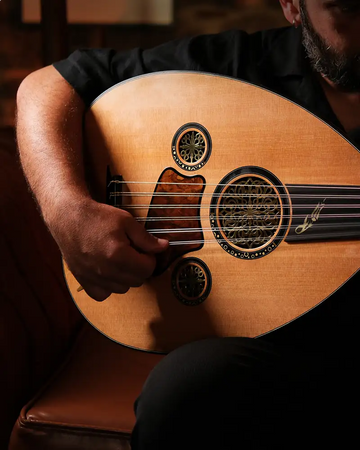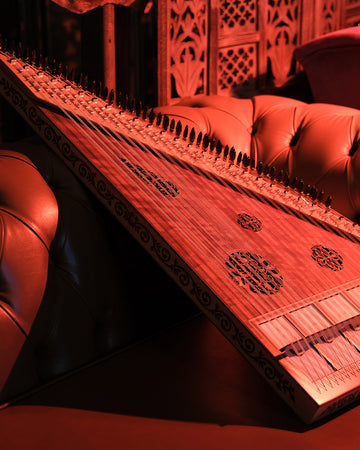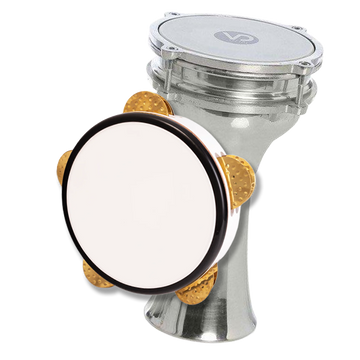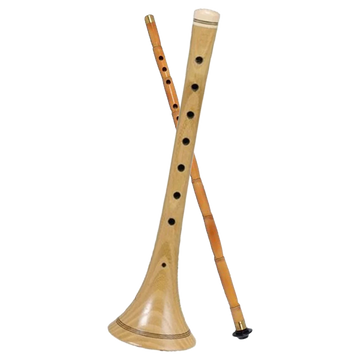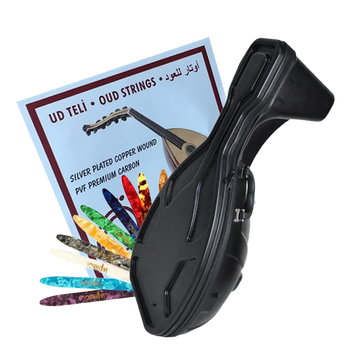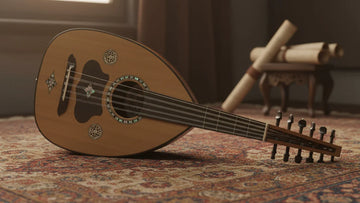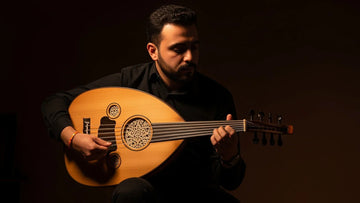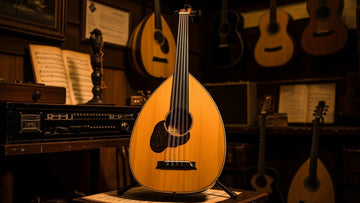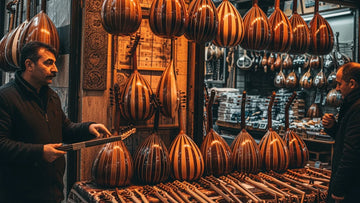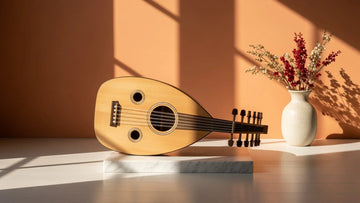The oud is a pear-shaped stringed instrument that has been used in Middle Eastern music for centuries. It has a unique sound that is instantly recognizable, and it is often used in traditional and contemporary music. In this article, we will explore the oud instrument in detail, covering everything from its history and construction to its playing techniques and popular musicians who have used it.
Table of Contents
- History of the Oud
- Anatomy of the Oud
- Construction of the Oud
- Types of Oud
- Playing the Oud: Basic Techniques
- Advanced Oud Techniques
- Tuning the Oud
- Maintaining the Oud
- Famous Oud Musicians
- Oud in Contemporary Music
- Buying an Oud: What to Consider
- Learning to Play the Oud
- Oud vs. Other Stringed Instruments
- Oud in Different Cultures
- Conclusion
1. History of the Oud
The oud has been around for over a thousand years, and its exact origins are somewhat uncertain. However, it is believed to have originated in Persia and spread to the Arab world during the Islamic Golden Age. The earliest known depiction of an oud-like instrument dates back to the 1st century AD, and the instrument has been mentioned in numerous Arabic and Persian texts since then.
2. Anatomy of the Oud
The oud is a fretless, pear-shaped instrument with a short neck and a large, round body. It typically has 11 strings, although some ouds may have more or fewer. The strings are divided into courses, with each course consisting of two strings that are tuned to the same note. The strings are typically made of nylon or gut.
3. Construction of the Oud
The oud is typically made from a combination of woods, including rosewood, walnut, and spruce. The bowl-shaped body is made from thin strips of wood that are glued together and carved into shape. The soundboard is made from a thin piece of spruce, and the neck and pegbox are typically made from a single piece of wood.
4. Types of Oud
There are several different types of oud, each with its own unique sound and characteristics. Some of the most popular types include the Turkish oud, the Arabic oud, and the Iranian oud.
5. Playing the Oud: Basic Techniques
Playing the oud can be challenging, especially for those who are new to the instrument. However, there are several basic techniques that every oud player should master, including tuning the strings, playing scales, and playing basic chords.
6. Advanced Oud Techniques
Once you have mastered the basics of playing the oud, you can start exploring more advanced techniques, such as playing arpeggios, using vibrato, and playing harmonics.
7. Tuning the Oud
Tuning the oud can be a daunting task, but with practice, it can become second nature. The most common tuning for the oud is C-F-A-D-G-C, although there are many other tunings that can be used.
8. Maintaining the Oud
Proper maintenance is essential to keep the oud in good condition and ensure that it produces a high-quality sound. Some basic maintenance tasks include cleaning the strings and the instrument, oiling the fretboard, and storing the oud in a dry and cool place.
9. Famous Oud Musicians
Over the years, there have been many famous oud musicians who have helped to popularize the instrument and make it a staple in Middle Eastern music. Some of the most well-known oud players include Munir Bashir, Farid Al-Atrash, and Marcel Khalife.
10. Oud in Contemporary Music
The oud has also found a place in contemporary music, with musicians from a variety of genres incorporating the instrument into their work. For example, jazz musician Rabih Abou-Khalil has used the oud in many of his recordings, and rock band Led Zeppelin used the instrument in their song "Kashmir."
11. Buying an Oud: What to Consider
If you are interested in buying an oud, there are several factors that you should consider. These include the type of oud, the materials used in its construction, and the sound quality. It is also important to consider the price and the reputation of the maker.
12. Learning to Play the Oud
Learning to play the oud can be a rewarding experience, but it does require dedication and practice. There are many resources available for those who want to learn, including books, online courses, and private lessons.
13. Oud vs. Other Stringed Instruments
The oud is often compared to other stringed instruments, such as the guitar and the lute. While there are certainly similarities between these instruments, the oud has a unique sound and playing style that sets it apart.
14. Oud in Different Cultures
The oud has played an important role in many different cultures throughout history. In addition to its use in Middle Eastern music, the oud has been used in music from Greece, Armenia, and other countries.
15. Conclusion
The oud is a fascinating instrument with a rich history and a unique sound. Whether you are a musician who is interested in incorporating the oud into your work or simply someone who appreciates the beauty of Middle Eastern music, the oud is a worthwhile instrument to explore.
FAQs
- Is the oud difficult to play?
- Yes, the oud can be challenging to play, especially for those who are new to the instrument. However, with practice and dedication, anyone can learn to play the oud.
- What is the difference between an Arabic oud and a Turkish oud?
- The main difference between these two types of oud is the number of frets. The Arabic oud typically has fewer frets than the Turkish oud, which can affect the playing style and the range of the instrument.
- How much does a good oud cost?
- The price of an oud can vary widely, depending on the quality of the instrument and the reputation of the maker. A good quality oud can cost anywhere from a few hundred to several thousand dollars.
- Can the oud be used in different genres of music?
- Yes, the oud has been used in a variety of genres, including jazz, rock, and world music.
- Is it necessary to use a plectrum to play the oud?
- No, it is not necessary to use a plectrum to play the oud. Many oud players use their fingers to pluck the strings, although some do prefer to use a plectrum for certain styles of music.
Conclusion
In conclusion, the oud is an ancient and fascinating instrument with a rich history and a unique sound. It has been used in music from many different cultures and has found a place in contemporary music as well. Whether you are a musician looking to incorporate the oud into your work or simply someone who appreciates the beauty of Middle Eastern music, the oud is a worthwhile instrument to explore.
With its distinctive sound and playing style, the oud is a challenge to play, but with dedication and practice, anyone can learn to play this beautiful instrument. It is also important to consider factors such as the type of oud, the materials used in its construction, and the reputation of the maker when purchasing an oud.
Overall, the oud is a versatile and fascinating instrument that has captured the hearts of musicians and music lovers alike. With its rich history and unique sound, the oud is sure to continue to be a beloved instrument for generations to come.
